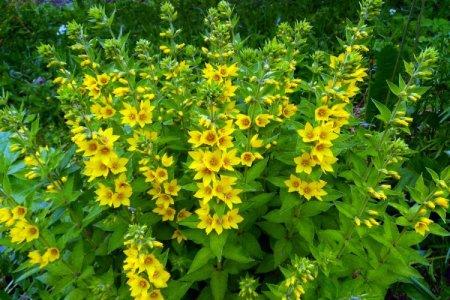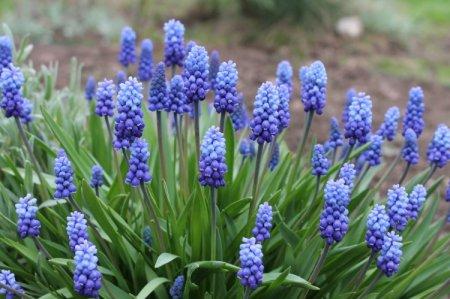
Bright round flowers, a bit reminiscent of flattened pompons, are daisies. They are easy to find in gardens and city flower beds, because they are beautiful, unpretentious and easily get along with different neighbors. Let's tell you more!
general information
Daisies are classified as asters, and most often grow in the wild in Mediterranean countries. From ancient Greek, their name is translated as "pearl", and this is all because wild daisies are small and snow-white.
The buds open with the first rays of the sun, and in some cultures, these flowers symbolize the beginning of a new day. In essence, it is a small herb with the same shallow root system. One bud is formed on a leafless stem. It blooms into a delicate flower with a yellow center.
Daisies are perennials, but gradually the bushes grow and bloom worse. To preserve decorativeness, they need to be periodically rejuvenated and planted. Also, daisies are actively used in folk medicine, and they also make teas and herbal mixtures from them.

Types of daisies
There are dozens of varieties of daisies, including simple, semi-double, and terry. And every year breeders bring out more and more of them. But they can all be divided into these basic categories!
Annual daisies
They will be a wonderful seasonal decoration of a terrace, gazebo or balcony. The main advantage is that there is no need to worry about overwintering the flower bed. The flowers are predominantly white or pinkish.

Perennial daisies
These are larger ornamental varieties that winter outdoors. They grow on average up to 15 cm and are distinguished by serrated, fleecy leaves. A daisy bed can bloom continuously from May to November.

Composite daisies
This includes the most interesting findings of breeders with original shapes, sizes and colors of inflorescences. Keep in mind that large-flowered varieties bloom later than small ones, but then they bloom longer.

Pompom daisies
This is a conditional category consisting of double flowers that look like round pompons without a pronounced center. The diameter reaches 6-8 cm, depending on the variety. These include, for example, the Bellissim, Tasso, Habanera and Pink Ball daisies.

Daisy care
Winter-hardy and unpretentious daisies are very easy and pleasant to grow. They are suitable even for novice gardeners, because they do not require any complex manipulations.
Temperature
Daisies germinate best at about +20 degrees. It is especially important to consider this if you are planting home seedlings in early spring.

Lighting
Daisies prefer diffused but abundant light. They can grow in partial shade, but then you will not be able to achieve such a bright and lush flowering. Moreover, peduncles can stretch and deform.

Watering
Daisies do not have a very deep root system, so they do not draw moisture well on their own. Therefore, they need regular, abundant watering. With a lack of water, the inflorescences become smaller, and the terry ones also lose this feature.

The soil
Daisies thrive in any soil as long as it is fertile and well-drained. They especially like loams, which hold the moisture that daisies need. After watering, be sure to loosen and mulch the soil.

Fertilizers and feeding
As soon as the ground finally thaws, you need to make the first top dressing, mainly urea. Apply fertilizer next time in early summer for a lush bloom. This is the optimal minimum, and then look at the state of your soil and flower garden.

Wintering
Daisies overwinter in the ground and are not a hassle.You don't even need to cut the leaves and buds, because the plant uses the nutrients from them. But we advise you to cover the bushes with leaves or spruce branches.

Planting and breeding
Daisy seeds can be planted directly in the ground by mid-summer. Lightly sprinkle them with earth, but do not deepen them, and in 1.5 weeks the first shoots will appear. As the seedlings grow, they will have to dive and thin out. The optimal distance between young bushes is 20 cm. And in spring they will bloom.
You can achieve flowering in the first year, but then the seeds must first be germinated with seedlings in early March. Also, daisies reproduce well by self-seeding, although they can very quickly capture the entire site.
In early summer, you can propagate the bushes by cuttings. Lateral shoots are rooted immediately in wet soil, and after a couple of weeks they will take root. By the third year of life, the bushes lose their decorative effect, but they grow well, so that you can rejuvenate them by dividing them.
It is better to divide the rosettes in the middle of summer, in the pause between flowering. Remove leaves and buds from each part, shorten the roots and plant immediately in the ground. For the first time, take care of shelter from the scorching sun and do not forget to water the young bushes.

Pests and diseases of daisies
Daisies are resistant to disease, but if not properly cared for, they can suffer from gray mold or powdery mildew. Avoid excess moisture, thin out overly dense plantings and do not overuse fertilizers. And if the problem has already arisen, use specialized fungicides as soon as possible.
Of the insects, the most dangerous pests of daisies are slugs and caterpillars, which simply devour the bushes. Preventive treatment with insecticides helps from them. Moreover, it is not even necessary to use chemical ones - biological ones are also suitable.

Daisies - photo
It's hard to resist the simple yet vibrant beauty of daisies. And who needs it? Just look how good they are even in the photo!





























